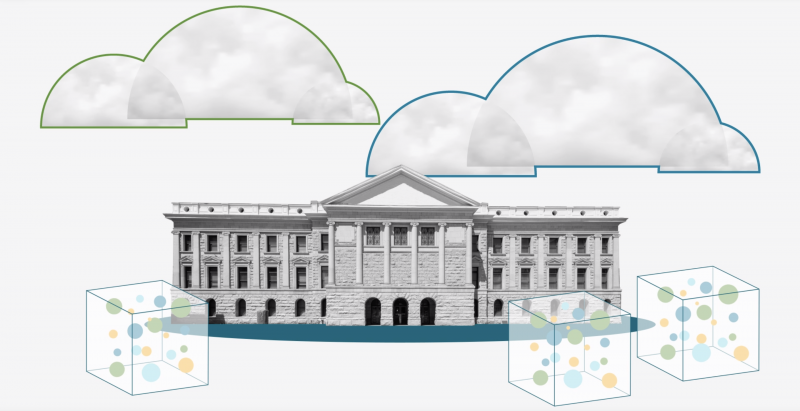Imagine that you have four scientists trying to crack a problem. Each scientist is focused on a different aspect of the problem, working in their own lab and analyzing their own data. Individually, each scientist might make headway on their particular angle. But the full solution will remain elusive unless they find a way to integrate their work quickly and seamlessly.
It’s the same with data. When you have access to all data, your agency can make the best use of it. Yet, many agencies rely on many different tools for various parts of the data management process, limiting collaboration. The more tools an agency has to manage data, the more complex and expensive the process generally is. It’s also much easier for some datasets to fall through the cracks.
Adopting a unified platform for data lifecycle management ensures that all data is available, secure, and ready to use. With this approach, agencies know where their data resides, while also making significant progress in meeting the goals of the Federal Data Strategy, as well as digital transformation and modernization objectives.
With this approach, all data, regardless of where it’s located, go on the same journey. Here’s how it works:
- Ingest: As a piece of data enters an agency repository, it is ingested into the platform.
- Transform: The data, along with its metadata, is transformed when it’s scrubbed and structured for realtime analysis.
- Query: The piece of data can now be requested, queried, and leveraged for actionable insight.
- Optimize: The data is continually analyzed and managed, so the ratio between usage and storage costs are always optimized.
- Analyze: Now, in the data platform, the data can be analyzed to make predictions and gain insights as part of a larger body of knowledge.
Using a unified platform ensures secure data management, workload analysis, data lineage, and data discovery. It also becomes easier to move data to-and-from multiple data sources, data centers or public clouds without losing valuable metadata, security, and governance controls.
Another critical variable to consider when evaluating unified platforms is to make sure the data platform can handle all types of data: analog and digital sources, sensors, machine logs, images, and more.
As a government entity, your agency undoubtedly puts data security, privacy, and governance first. That might mean you’re better off with a private cloud version of a data management platform. Look for one that provides the same capabilities as public clouds, but includes additional features to consistently enforce security and governance policies across hybrid and multi-cloud environments.
It’s also essential to keep the future in mind. For example, no agency wants to get locked into a proprietary solution that loses its luster over time. It’s much smarter and more cost-effective to research upfront and consider only platforms committed to continual and rapid innovation.
One of the best ways to ensure that your data lifecycle platform will grow and change to meet your requirements is by choosing enterprise open source technology. This approach not only allows agencies to combine data from multiple environments and architectures, but it also enables them to more easily integrate modern technologies like containers. Container storage, for example, allows agencies to keep data in multiple locations while using a single access point. Containers also are useful as object storage for archival, backup, and media storage.
Together, containers and private cloud lifecycle data management let agencies more flexibly manage all their data from as many sources as necessary. These technologies also help agencies eliminate expensive and inefficient data silos and redundant point solutions while maintaining strict data security, governance, and control of all environments. What’s more, agencies can be ready for whatever comes next—new technologies, new mission requirements, or unpredictable events.
This article is an excerpt from GovLoop Academy’s recent course, “How to Get the Most Value From All Data, All the Time.” Access the full course here.





Leave a Reply
You must be logged in to post a comment.